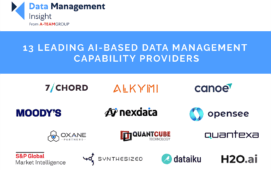Despite the downturn in the financial markets and cost pressures on data management budgets, half of Reference Data Review readers still do not have formal metrics in place to prove the success of a project, according to the results of our recent reader poll.
The poll results indicate that half of respondents continue to use anecdotal evidence to measure the success of a data management project. This is in spite of the fact that senior management is more rigorously scrutinising the return on investment a firm receives from these projects. After all, every penny counts, as belts are tightened and project deployment becomes more tactical.
It is encouraging that no respondents indicated that they do not measure the impact of such projects, but it is clear that the industry may be in need of more benchmarking tools and best practices around proving ROI in a tangible manner.
Some firms are obviously ahead of the curve and have set these formal metrics in place already and this is something that many vendors have noted when speaking to Reference Data Review over recent months. For example, Rick Enfield, product business owner of the Asset Control’s AC Plus solution, explained last month that it has become an integral part of the vendor’s sales pitch to help provide metrics against which to measure ROI. The challenge is to demonstrate specifically where implementations will save money by reducing duplication in terms of effective relationships or operational risk features, he said.
Even regulatory bodies are aware of the need for metrics in the data management space. Earlier this year, Francis Gross, head of the external statistics division at the European Central Bank (ECB), suggested that regulators should become the “catalysts” for change in the market by setting metrics and standards for data management. It is also under this assumption that the ECB is seeking to launch a reference data utility.
The easiest metrics to measure with regards to success are seemingly around the impact of streamlining the supply chain for data, the reduction of duplicative or redundant data and a reduction in direct costs from errors. Compliance and risk management concerns also play a part in this by providing yet more tangible metrics (outside of pure cost) against which these projects can be assessed.
This, however, requires close work between data managers and downstream users of this data in order to keep track of the benefits to the financial institution as a whole. This is not an easy proposition in an environment where headcounts are down and data volumes are up.
Subscribe to our newsletter



